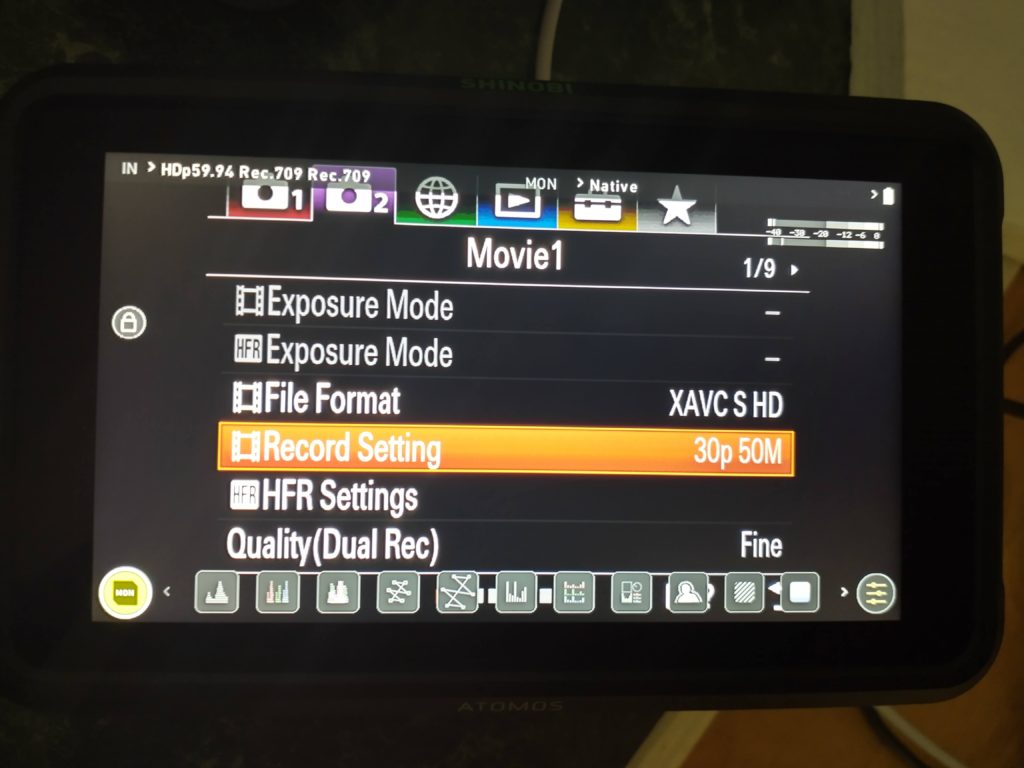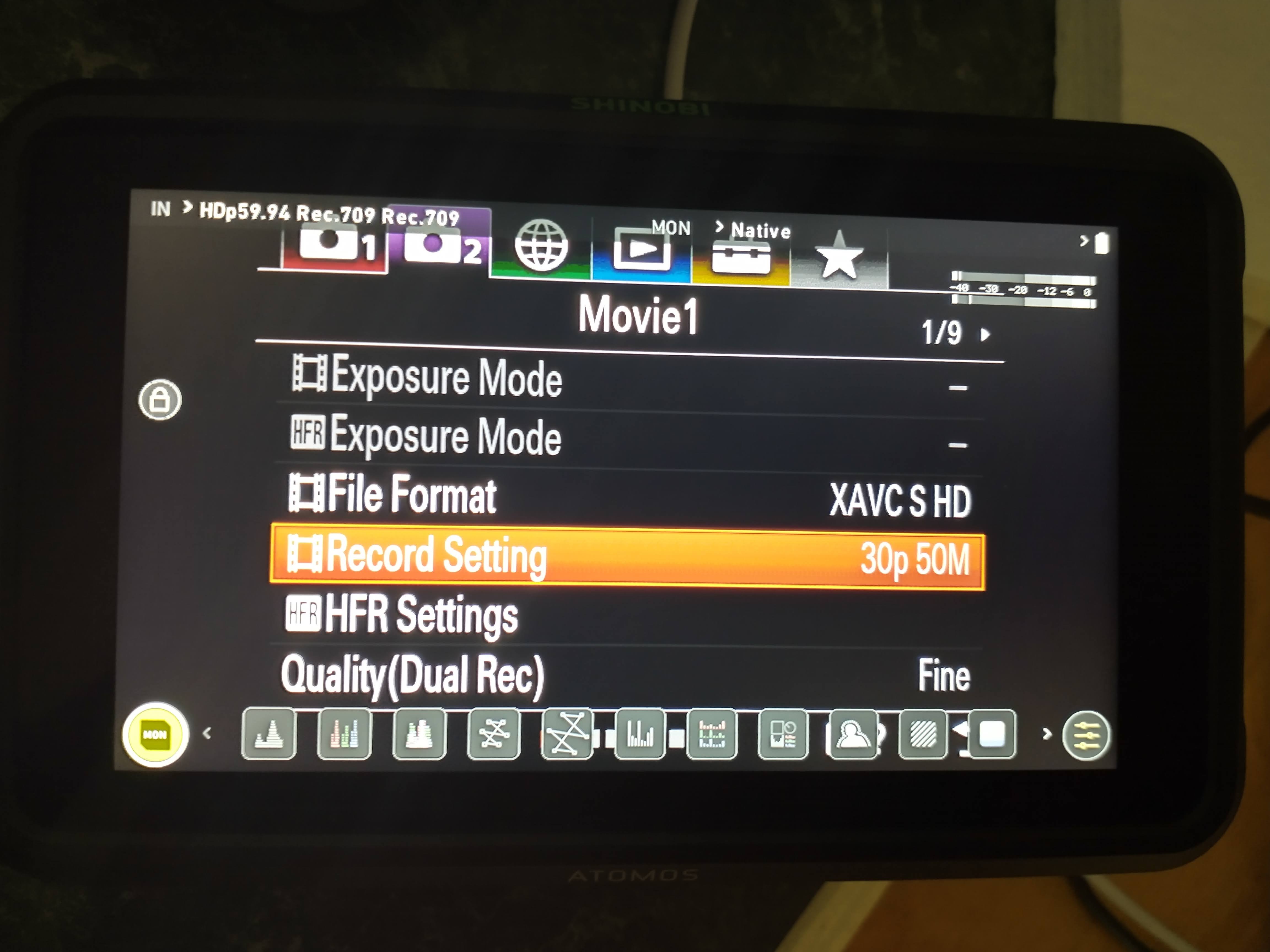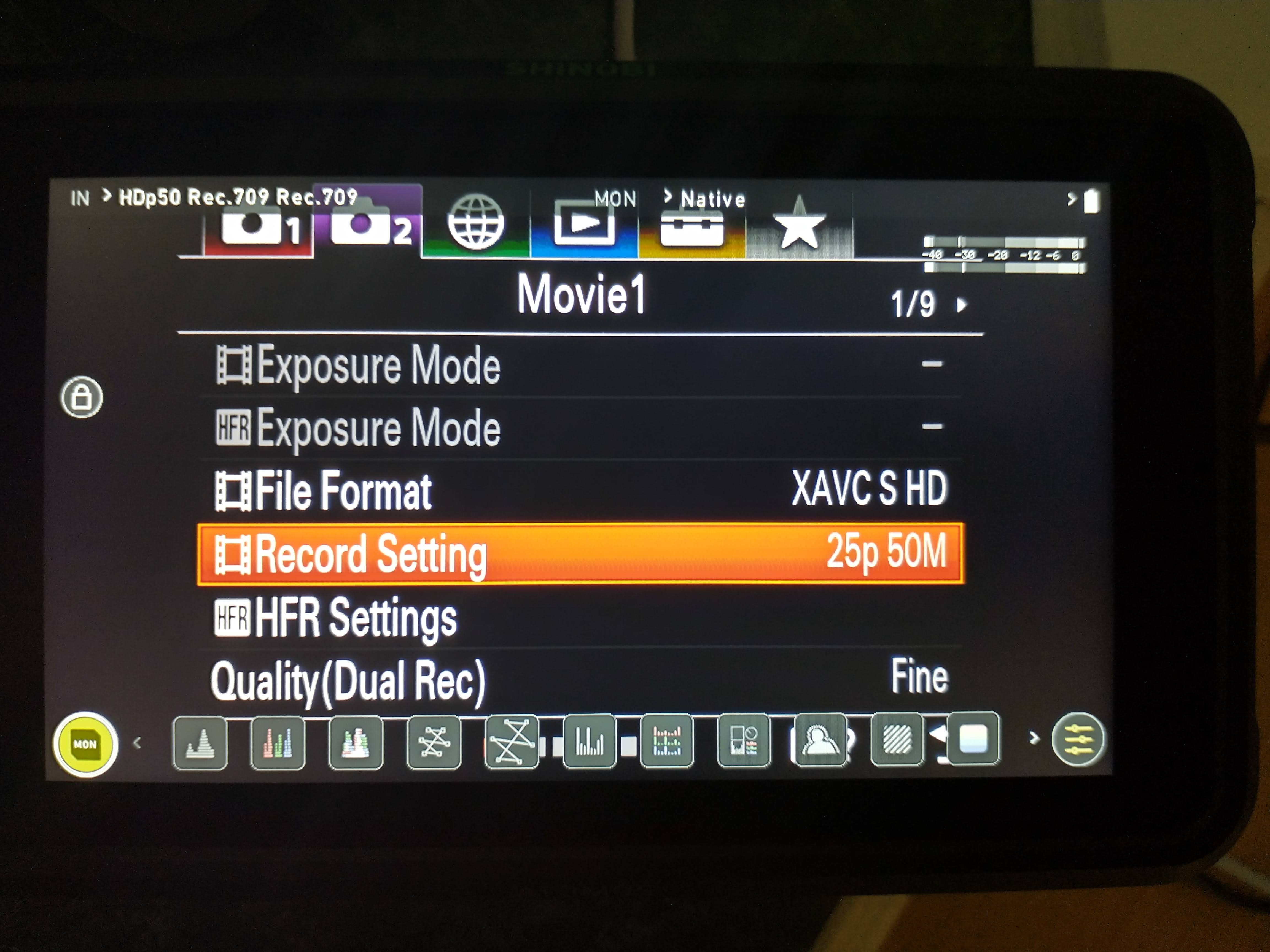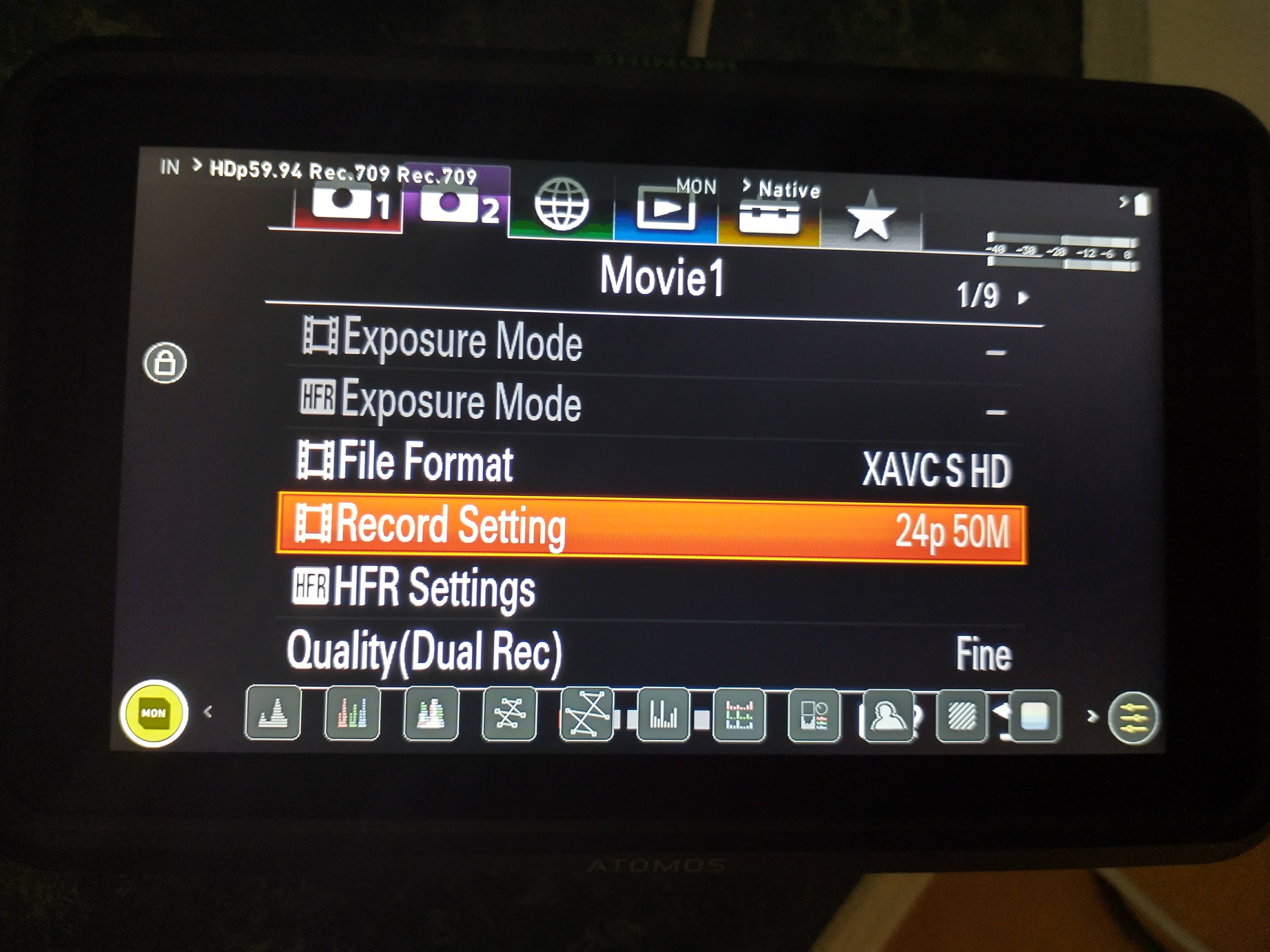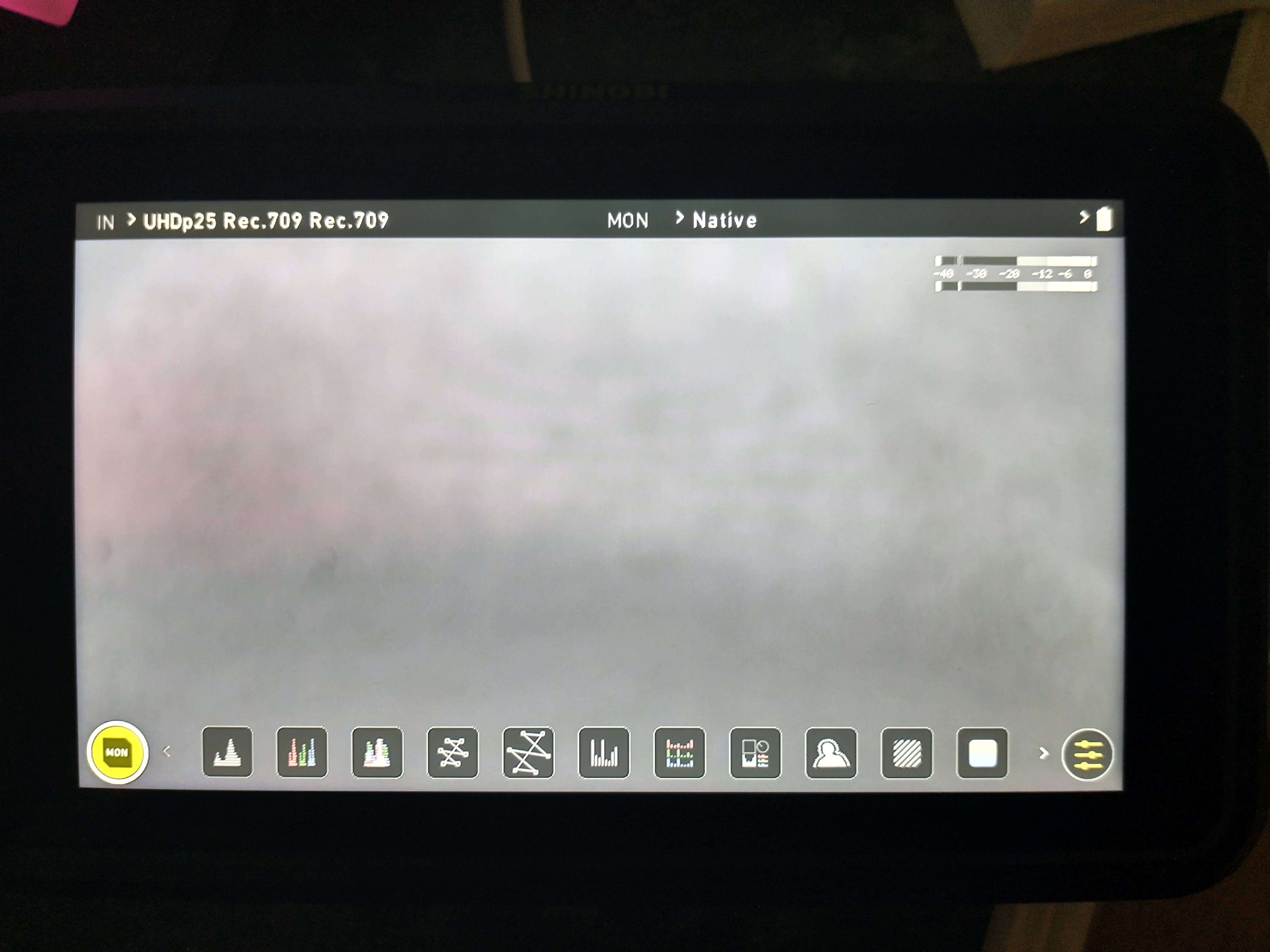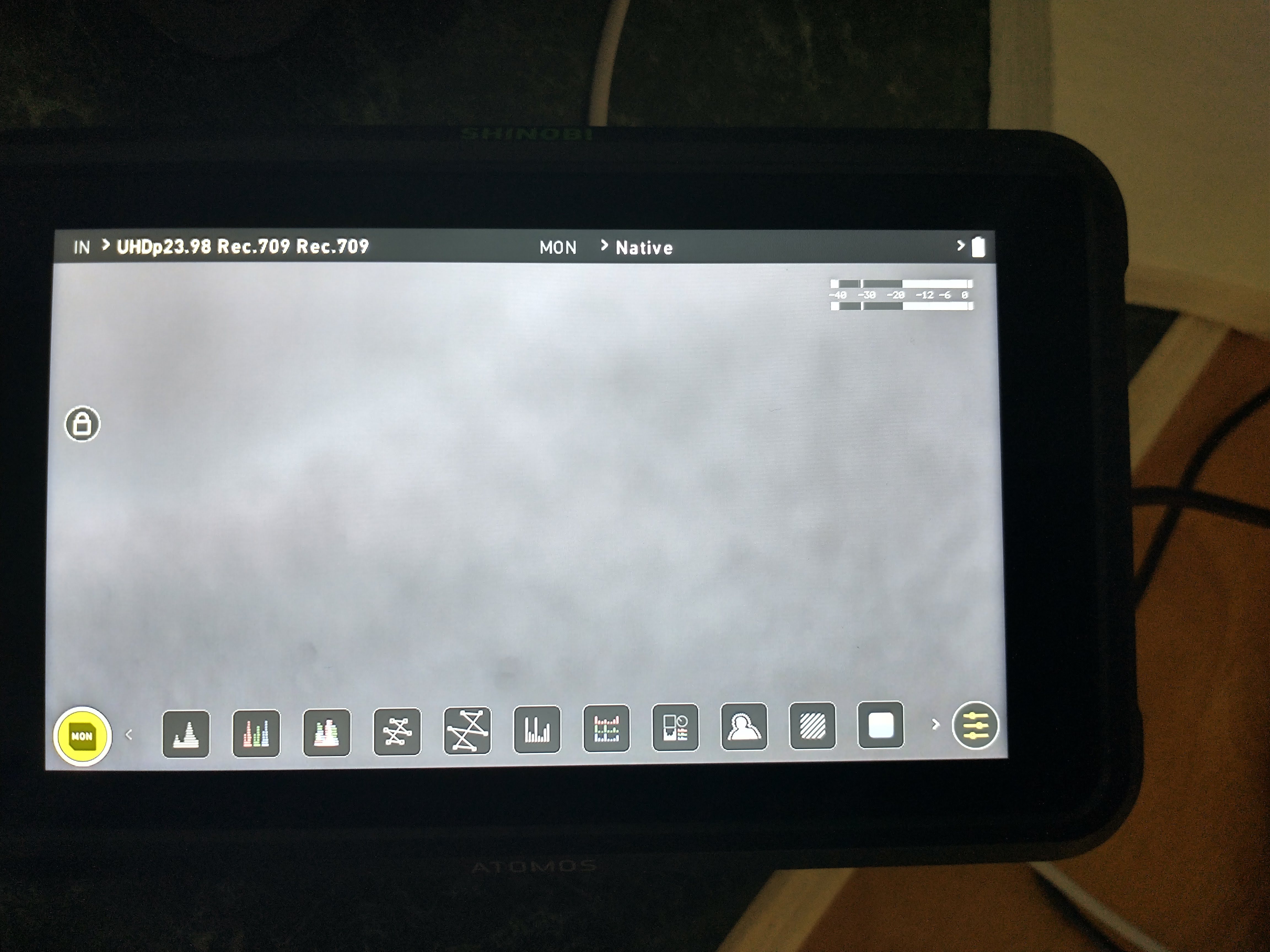Frequent readers know that I have been covering —and taming— camera shyness for several years, and that I have actually documented three types of camera shyness. They also know that I encourage camera manufacturers to eliminate shyness via firmware updates, and I suggest multiple workarounds to solve them in workflow articles. The difficulty many people have is how to determine whether their camera is shy or outgoing in a particular live mode (spatial resolution together with framerate). Many other tech journalists have reviewed the Shinobl for its primary purpose as a monitor for exposure and framing of an image. In this targeted review, I’ll cover a particular feature others haven’t: How great an instrument the Shinobi monitor is to instantly check shyness of your cameras in each particular mode, so you can act accordingly. Of course, I’ll give you a refresher about the three camera shyness types and explain why the Shinobi is actually better than any other Átomos device for this shyness detection mission.

Refresher regarding desired framerates
As I have covered before, the only justification for higher framerates in final delivery is if you are covering fast action, like sports or gaming. That is when it is justifiable to use high framerates in final delivery, like 50p or ≈59.94p in final delivery. If you are only covering talking heads, it is a tremendous waste of bandwidth to use such high framerates. Given a limited bandwidth budget, each frame will need to be compressed more to achieve the extra frames per second. That’s why, if you are covering only talking heads for web streaming, you are better off with a lower final delivery framerate like:
- ≈29.97p
- 25p
- 24p exact
- ≈23.976p (sometimes rounded to 23.98)
Of course, even higher framerates are available with some cameras for super slow motion, but that goes beyond the scope of this particular article.
Refresher about the three types of “shy” camera situations over HDMI
There are three types of 1080p shyness in cameras over HDMI, in order of importance: PsF, Telecine and Doubling.
Type 1: PsF (progressive segmented frame)
I am separating PsF (progressive segmented frame) into three subcategories:
- When the shy camera is set to image (and sometimes also to record internally) with a common progressive framerate (in ex NTSC regions) like ≈29.97p, it sadly outputs the signal as PsF (progressive segmented frame), in other words, disguised as ≈59.94i. To be more specific, it takes each progressive frame and segments it into two artificial fields, each with half of the original pixel resolution and each with 540 intertwining lines to add up to the original 1080. Unlike true 1080i —where each field can potentially have different temporal (time) information when there is movement, with PsF the temporal information of each artificial field is always identical.
- Similarly, when the shy camera is set to image (and record internally) with a common progressive framerate (in ex PAL regions) like 25p, it sadly outputs it the signal as PsF (progressive segmented frame), in other words, disguised as 50i.
- The third PsF case is very rare nowadays and never happens with HDMI, but only with some SDI and with very expensive cameras, where with the ≈23.976p (aka ≈23.98p) rate the camera sadly outputs the signal as PsF (progressive segmented frame), in other words, disguised as 47.952. (In the case of HDMI, shy 1080p cameras in ≈23.976p use a telecine method with a 2:3 (aka 3:2) pulldown explained ahead.) This rare case is outside the scope of this article.
Type 2: Telecine with pulldown
To make the ≈23.976 fit in a more standard ≈59.94i television rate, telecine performs a complex assignment to make pieces of the original frames “fit” into ≈59.94 fields, some of which contain the same temporal information and others don’t.
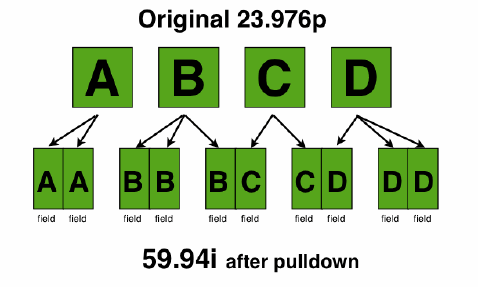
This is illustrated in the above graphic, which I created in 2008 to illustrate my very first article in ProVideo Coalition magazine. The instructions for the pulldown (i.e. “Put the first progressive frame in both fields of the first interlaced video frame. Now, put the second progressive frame in both fields of the second video frame in the first field of the third video frame, then…”) seem as twisted as the Twister game which dates back to 1966.
Type 3: Doubling of progressive frames per second
When set to image and record ≈29.97p, some shy 1080p cameras double the number of frames per second to ≈59.94 progressive frames per second on the HDMI or SDI output. Similarly, when set to image and record 25p, they double the output framerate to 50p (50 progressive frames per second) over HDMI or SDI. As long as your hardware can accept high progressive framerates like 1080/50p and 1080/≈59.94p (i.e. more recent models like the UltraStudio Recorder 3G, ATEM Mini, ATEM Mini Pro, ATEM Mini Pro ISO), this is the easiest type of shyness to solve, and doesn’t require the video mixer (“switcher”) developers/manufacturers to do anything special, as several already have at my request to properly resolve PsF and telecine while retaining all of the original image quality. To solve type 3 shyness, the user/operator should simply set the camera menu and the session in the video mixer for the desired delivery framerate (1080/25p or 1080/≈29.97p) and the mixer or software will simply skip half of the repeated progressive frames per second. This solution is not perfect (and does not help with type 1 or type 2 shyness), but has been the best way to solve type 3 shyness when your camera suffers from it over HDMI, until it became possible (with some cameras) it is solved by outputting 4K UHD over HDMI. However, that is only appropriate if you have a reasonable way of downscaling from 4K UHD to 1080p in real time, at a reasonable cost, and at the matching original framerate, as covered in past and upcoming articles.
Why the Shinobi is ideal to test camera shyness in each mode
Most other portable monitors I have seen sadly round non-integer framerates to the closest integer and many don’t even indicate whether the incoming signal is presented is progressive or interlaced. Fortunately, the Shinobi —and other products from Átomos— display non-integer incoming framerates to two decimals. (I would prefer three in the case of 23.976 but I’ll accept 23.98 as close enough for the purpose of camera shyness. It’s certainly much better than rounding it to “24”, which is a completely different but acceptable framerate even in 2021.) In addition, the Shinobi indicates whether any HD input is progressive or interlaced. In that sense, the Shinobi goes beyond its published specs
Even though other similar devices from Átomos can also display incoming framerates up to two decimals, they also have a wonderful feature (for internal recording) that Átomos actually added at my request several years ago: Those monitor/recorders (and some converter boxes) from Átomos can additionally perform reverse telecine to compensate for type 1 and 2 camera shyness. That feature is great for the purpose of recording in Átomos recorders, but if the operator is not very careful, the Átomos recorder can be doing reverse telecine and displaying the end result, not the original incoming type. That is the one reason why the Shinobi is better than the monitor/recorders, i.e. when you are planning to use the signal another way, i.e. live streaming or to feed a video mixer (“switcher”), since the Shinobi is completely foolproof to detect shyness, when that is the primary goal. With the other monitor/recorders, it could be displaying the result after an inverse telecine process, which is great for internal recording, but subject to human error as a standalone shyness detection instrument.
Examples when the Shinobi detects camera shyness
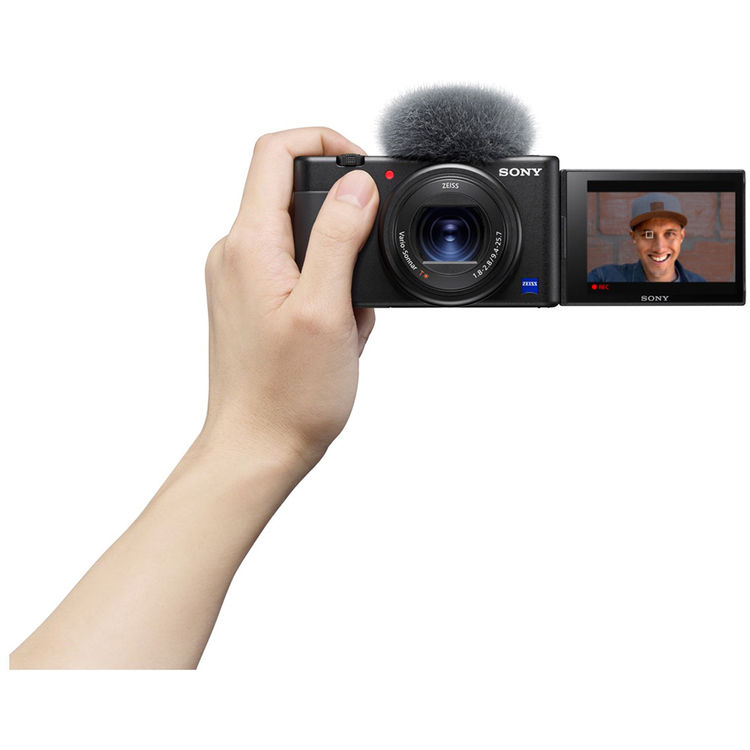
As you may have read in my recent article called Sony ZV-1 camera framerate shyness + outgoing modes via HDMI & USB (illustrated above), the Shinobi helped me determine when the ZV-1 is shy and also when the ZV-1 is guilty of rounding non-integer rates to the closest integer in menus and onscreen displays. The Shinobi always displays rates to two decimals and also indicates whether it’s progressive or interlaced (although that interlaced indication actually means that it’s PsF when the camera is set to image and/or record progressive internally).
Above, the Shinobi reveals that the ZV-1 is set to image and record internally 1080p at ≈29.97p. However, the ZV-1 is sadly outputting double the rate over HDMI: ≈59.94p, i.e. type 3 shyness.
Above, the Shinobi reveals that the ZV-1 is set to image and record internally 1080p at 25p. However, the ZV-1 is sadly outputting double the rate over HDMI, i.e 50p. type 3 shyness.
Above, the Shinobi reveals that the ZV-1 is set to image and record internally 1080p at ≈23.976p. However, the ZV-1 is sadly outputting ≈59.94p over HDMI, type 2 and 3 shyness combined. With a different setting in the ZV-1, it outputs 1080i at 59.94i (not shown in the photo), which is type 2 shyness.
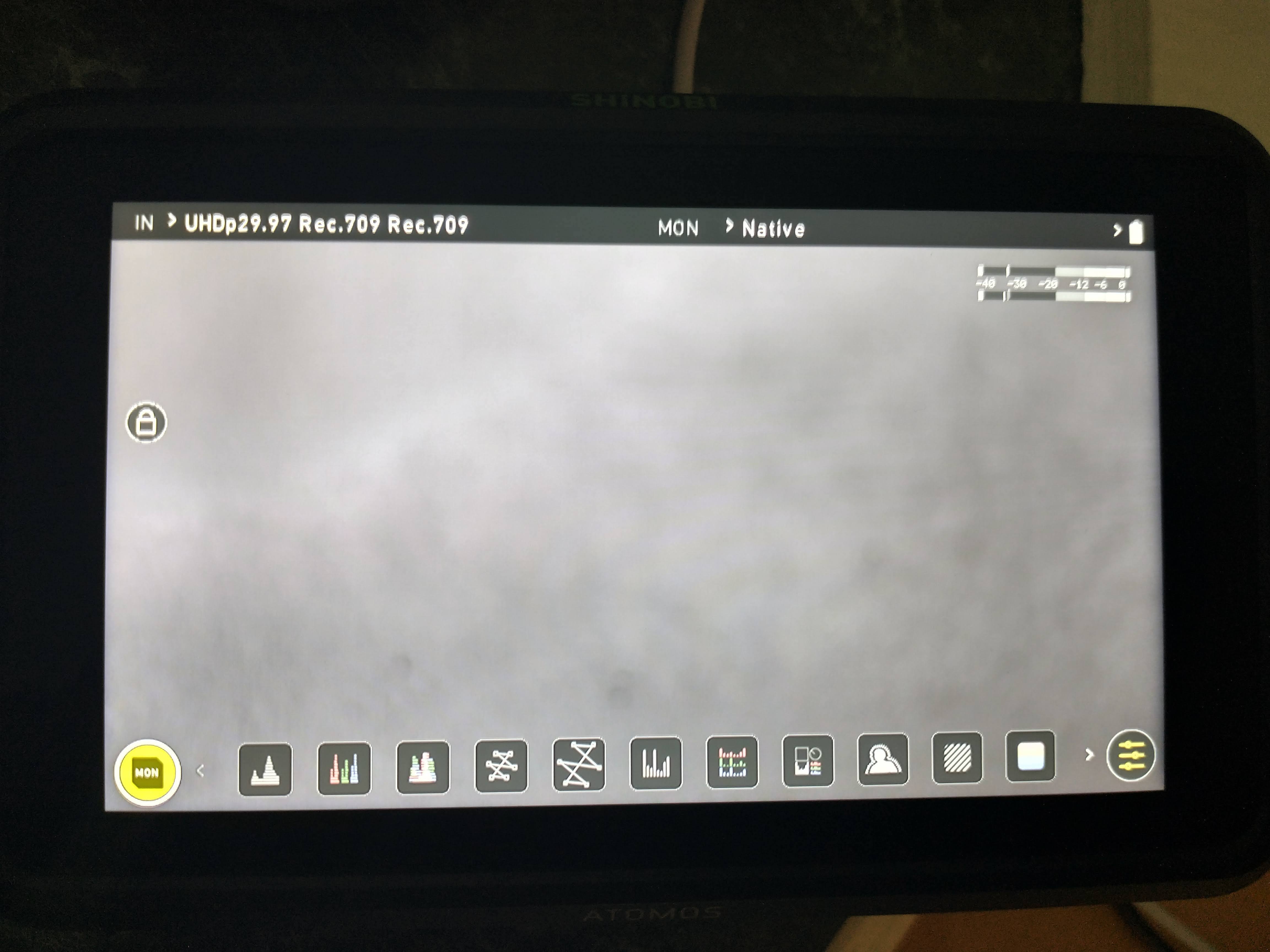
Above, the Shinobl reveals that the ZV-1 is set to image and output 4K UHD at ≈29.97p and is fortunately not shy.
Above, the Shinobl reveals that the ZV-1 is set to image and output 4K UHD at 25p and is fortunately not shy.
Above, the Shinobl reveals that the ZV-1 is set to image and output 4K UHD at ≈23.976p and is fortunately not shy. However, both devices round it to 23.98.
Conclusions
Whether we like it or not, camera manufacturers are still making shy cameras in 2021 for reasons that no longer make sense. The Shinobi from Átomos is the best standalone and foolproof device to test camera shyness and to know exactly what the camera is actually outputting, so we can take evasive action, as I have covered in many other articles. Of course, the Shinobi is also great to check your framing, focus, lighting and exposure, as many other tech journalists have covered in their reviews. I am glad that Átomos cooperated with me to reveal a different Shinobi feature that nobody else seems to be promoting.
(Re-)Subscribe for upcoming articles, reviews, radio shows, books and seminars/webinars
Stand by for upcoming articles, reviews, books and courses. Sign up to my free mailing list by clicking here. If you previously subscribed to my bulletins and no longer receive them, you must re-subscribe due to new compliance to GDPR. Most of my current books are at books.AllanTepper.com, and my personal website is AllanTepper.com. Also visit radio.AllanTepper.com.
Si deseas suscribirte (o volver a suscribirte) a mi lista en castellano, visita aquí. Si prefieres, puedes suscribirte a ambas listas (castellano e inglés).
Suscribe to my BeyondPodcasting show in English or CapicúaFM en castellano.
FTC disclosure
No manufacturer is specifically paying Allan Tépper or TecnoTur LLC to write this article or the mentioned books. Some of the other manufacturers listed above have contracted Tépper and/or TecnoTur LLC to carry out consulting and/or translations/localizations/transcreations. Many of the manufacturers listed above have sent Allan Tépper review units, including Átomos. So far, none of the manufacturers listed above is/are sponsors of the TecnoTur , BeyondPodcasting CapicúaFM or TuSaludSecretaprograms, although they are welcome to do so, and some are, may be (or may have been) sponsors of ProVideo Coalition magazine. Some links to third parties listed in this article and/or on this web page may indirectly benefit TecnoTur LLC via affiliate programs. Allan Tépper’s opinions are his own. Allan Tépper is not liable for misuse or misunderstanding of information he shares.
Copyright and use of this article
The articles contained in the TecnoTur channel in ProVideo Coalitionmagazine are copyright Allan Tépper/TecnoTur LLC, except where otherwise attributed. Unauthorized use is prohibited without prior approval, except for short quotes which link back to this page, which are encouraged!

Filmtools
Filmmakers go-to destination for pre-production, production & post production equipment!
Shop Now